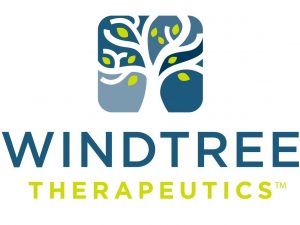
CSL’s Garadacimab Trial Supports Regulatory Submissions for Severe Swelling Disease, Hereditary Angioedema
By Mark Terry
February 28, 2023
CSL, based in King of Prussia, Pa., reported data from its Phase III VANGUARD trial that supports regulatory submissions to the FDA and European Medicines Agency (EMA) later this year. The trial evaluated garadacimab, a first-in-class monoclonal antibody, for long-term prophylactic treatment of hereditary angioedema (HAE). The company presented data during the 2023 American Academy of Allergy Asthma & Immunology (AAAAI) Annual Meeting in San Antonio, Texas.
HAE is rare and can be life-threatening. It is a genetic disease that brings recurrent attacks of severe swelling (angioedema) in different parts of the body, including hands, feet, genitals, stomach, face or throat. If the swelling occurs in the airways, it can lead to fatal restriction of breathing. The attacks can be triggered by physical trauma or stress, but often do not have a known trigger.
Untreated HAE attacks can last as long as three days or longer, with many individuals, according to the U.S. Hereditary Angioedema Association, suffering three attacks per month.
Most HAE sufferers have a genetic defect resulting in a deficiency in C1-inhibitor, a plasma protein. HAE can also be found in people with normal C1-inhibitor levels, with other genes causing angioedema.
The Phase III VANGUARD trial studied the efficacy and safety of garadacimab. The trial evaluated patients aged 12 years and older with HAE type I or II as well as a run-in study period to determine a baseline attack rate.
The study participants were randomized 3:2 to receive a loading dose of 400mg followed by 200mg of garadacimab monthly or volume matched placebo monthly subcutaneously. The treatment period was six months, after which patients had the chance to continue into the open-label extension study, still ongoing.
Catherine Milch, Vice President R&D Immunology, CSL, told BioBuzz, “Results from the Phase 3 VANGUARD clinical trial showed that once-monthly subcutaneous injections of garadacimab significantly reduced the attack rate compared to placebo and support garadacimab as a novel, first-in-class potential treatment that could offer a significant benefit to patients with HAE. Garadacimab represents the next chapter in delivering on CSL’s promise to bring disruptive innovation and treatment options to patients living with rare diseases.”
The patients receiving the monthly garadacimab demonstrated a statistically lower attack rate per month compared to placebo. The trial demonstrated a mean attack rate decrease of 85.6% compared to placebo, with a median attack rate reduction of 100% compared to placebo. Mean attack rate decrease versus placebo after adjusting for baseline attack rate was 89.2%.
During the six-month period, 61.5% of patients receiving garadacimab had no attacks — none of the patients on the placebo group were attack-free. Of patients taking garadacimab, 74.4% demonstrated a greater than or equal to 90% attack reduction compared to the run-in period.
The drug had a favorable safety and tolerability profile, with no adverse events causing treatment discontinuation. Five mild injection site reactions were observed in two patients receiving garadacimab and three patients on placebo.
Milch said, “Market research has shown that despite the availability of effective therapies today, patients and physicians are looking for new treatment options that offer further control of the disease, less frequent injections, and more convenient administration. CSL’s development program for garadacimab aims to address these unmet medical needs.”
Based on the data, as well as topline data announced in August 2022, the company expects to submit the drug to regulators around the world later this year. In both the U.S. and Europe, the drug has been granted Orphan Drug Designation. Milch indicates they’re expecting to submit a Biologics License Application (BLA) to the FDA for HAE later this calendar year and to the EMA in the second half of this year.
CSL is also developing garadacimab for other indications aside from HAE, including idiopathic pulmonary fibrosis.
In addition to garadacimab, Milch describes the company’s focus on four strategic platforms: “plasma protein technology; recombinant technology, cell and gene therapy; and vaccines technology — to support continued innovation and continually develop and deliver innovative medicines and vaccines that address unmet medical needs, help prevent infectious disease and protect public health, and help patients lead full lives.”
CSL currently had almost 30 drugs in either Phase I, II or III trials.
The primary competitor for HAE is Takeda’s Takhzyro (lanadelumab). No direct comparison has been performed between Takhzyro and garadacimab, and cross-trial comparisons are not reliable. However, the VANGUARD data does suggest garadacimab may be better than Takhzyro at preventing HAE attacks. Takhzyro’s label indicates the mean monthly attack rate of the drug’s preferred starting dose was 0.26 compared to 0.22 in the VANGUARD trial.
Again, although the studies aren’t reliably comparable, the VANGUARD trial is very promising, with Takhzyro showing 67% of patients had a 90% or better decrease in HAE attacks compared to 74.4% in the VANGUARD trial, with garadacimab dosing occurring about half as often as Takhzyro.
Other companies going after HAE include Ionis Pharmaceuticals, which has a subcutaneous antisense compound, donidalorsen, in Phase III, and Intellia Therapeutics, which has a CRISPR-based therapeutic, NTLA-2002, in a Phase I trial.
- About the Author
- Latest Posts
Mark Terry is a freelance writer, editor, novelist and ghostwriter. He holds a degree in microbiology & public health and spent 18 years in infectious disease research and clinical and research genetics prior to his transition to a writing career. His areas of expertise include biotechnology, pharma, clinical diagnostics, and medical practice management. He has written literally thousands of articles, as well as market research reports, white papers, more than 20 books, and many other written materials. He currently lives in Michigan with his family.








